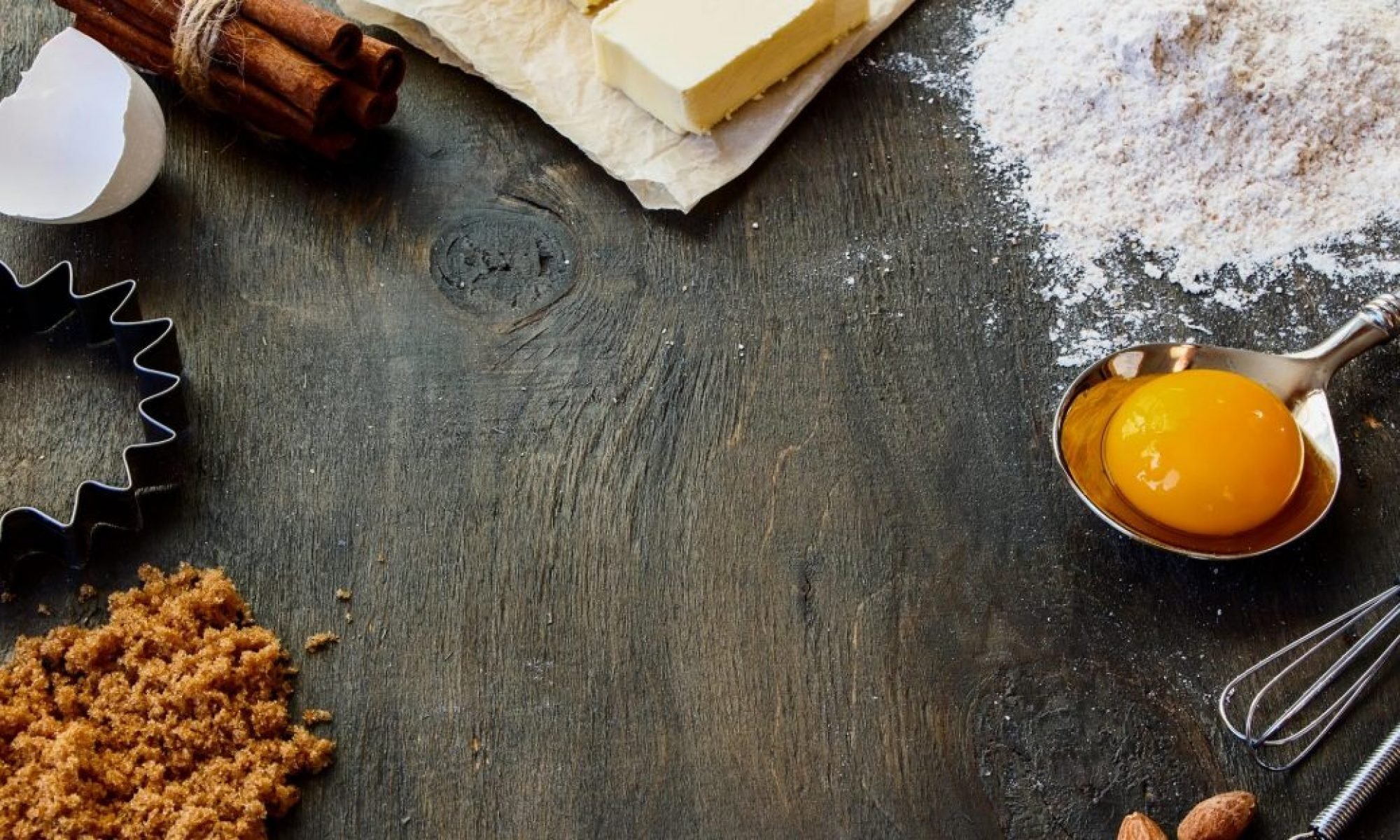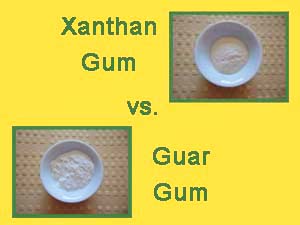If you have been baking gluten-free for much time, you know that these ingredients are essential in replacing gluten. Xanthan gum and guar gum powders are similar in that they both keep your ingredients together, but each has their unique ingredients, benefits, qualities and uses. You can use either, or both for the best results. Because I am asked the question so often, “What about guar gum vs xanthan gum?” – I thought I’d explain it in detail.
Xanthan Gum
Xanthan gum traps air in your baked goods to create an airy, light product. It starts out as a microorganism which is fed corn and soy. Therefore, if you have corn or soy allergies, it is best to use guar gum. Xantham is best used in baked goods. If baking a bread containing yeast, the use of xanthan gum turns out a better quality bread, then using guar gum alone. Read author, Carol Fenster’s article on how to use xanthan gum. We both use different amounts in our recipe, but her article is the perfect start.
Guar Gum
Guar gum keeps larger ingredients such as raisins and nuts from sinking to the bottom of the batter. It is primarily made from the inside of guar beans. It can be used as a thickener in liquids such as gravy. Use sparingly, though, as it is eight times more potent than cornstarch. Guar gum is also used as an emulsifier (keeps two unlike ingredients together, such as oil and water). It keeps your ingredients together. If you are not baking, but making a cold item guar gum would be your first choice. If using a recipe which calls for a high acid ingredient such as lemon juice or vinegar, you will need to increase the amount of guar gum you use. If you are making 3-1/3 cup of dry ingredients in a bread recipe along with one teaspoon vinegar, increase the guar gum (if using 1 tablespoon) by an additional 1/4 teaspoon. Otherwise, use xanthan gum.
Guar gum is also used as an emulsifier (keeps two unlike ingredients together, such as oil and water). It keeps your ingredients together. If you are not baking, but making a cold item guar gum would be your first choice. If using a recipe which calls for a high acid ingredient such as lemon juice or vinegar, you will need to increase the amount of guar gum you use. Otherwise, use xanthan gum.
How to use Guar Gum
The sturdier you wish your baked product, the more guar gum you should use. In bread recipes, it is typical to use one teaspoon of guar gum per 1 cup of flour and starches. If you are baking a cake use a little less; baking a pizza crust which will hold heavy toppings, use quite a bit more, 3-4 teaspoons. The more you use, the easier it will be to maneuver and lift rolled-out dough, though it will make it chewy. If you wish your cookies to be on the chewy side, only use a 1/4 teaspoon.
Both Xanthan Gum and Guar Gum
Interestingly, it came to my attention that the best way to use guar gum and xanthan gum combined is to mix them thoroughly with any oils before adding any other liquid ingredient.
I also read that when substituting guar gum for xanthan gum, use 1.5 times the amount of xanthan gum. From my experience, this is incorrect. I use equal amounts when substituting either. However, on a couple of occasions, I experienced the need for additional guar gum. It must depend upon the ingredients you use. Eggs act as a binder, as well. Perhaps you do not need additional guar gum when using plenty of eggs or other binders.
Also, sweet rice flour tends to be starchy as is tapioca. You may not need to add additional guar gum when using enough of these ingredients.
Tip
Mixing any gluten-free dough long enough will create a gluten-like substance. However, if you over-mix any dough which contains xanthan gum, the thinner it will become. It boils down to the ingredients the dough contains such as rice flour, cornstarch, and tapioca.
If you are gluten intolerant, be sure to purchase a brand of gum that is safe for you such as Bob’s Red Mill Guar Gum or Xanthan Gum.



I just heard about using pysillum husks instead of the gums and I look forward to trying it.
I made your oat/flaxseed bread again, but this time it didn’t rise. Can’t figure out what happen. Thought I did everything the same as the first time when it came out really good. I don’t think I overworked the dough.
Hi Kathy,
I’ve replied to your comment on the Oat Flaxseed Recipe page, here: http://glutenfreerecipebox.com/gluten-free-oat-flaxseed-sandwich-bread
Now I need to try Guar Gum…all I’ve ever used is Xanthan Gum.